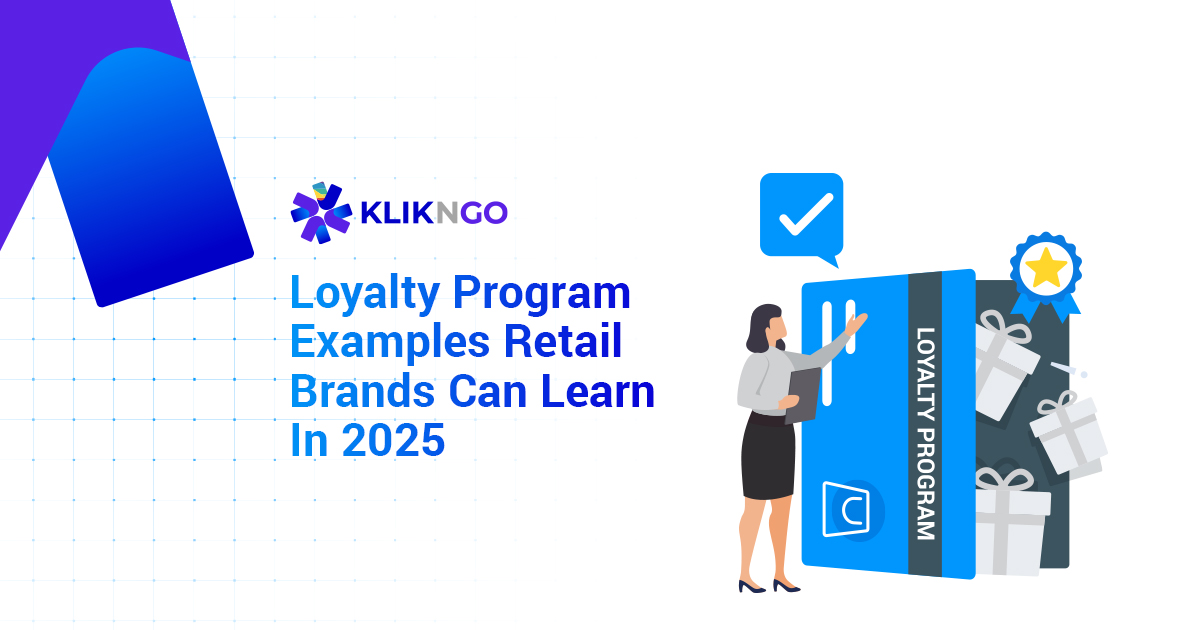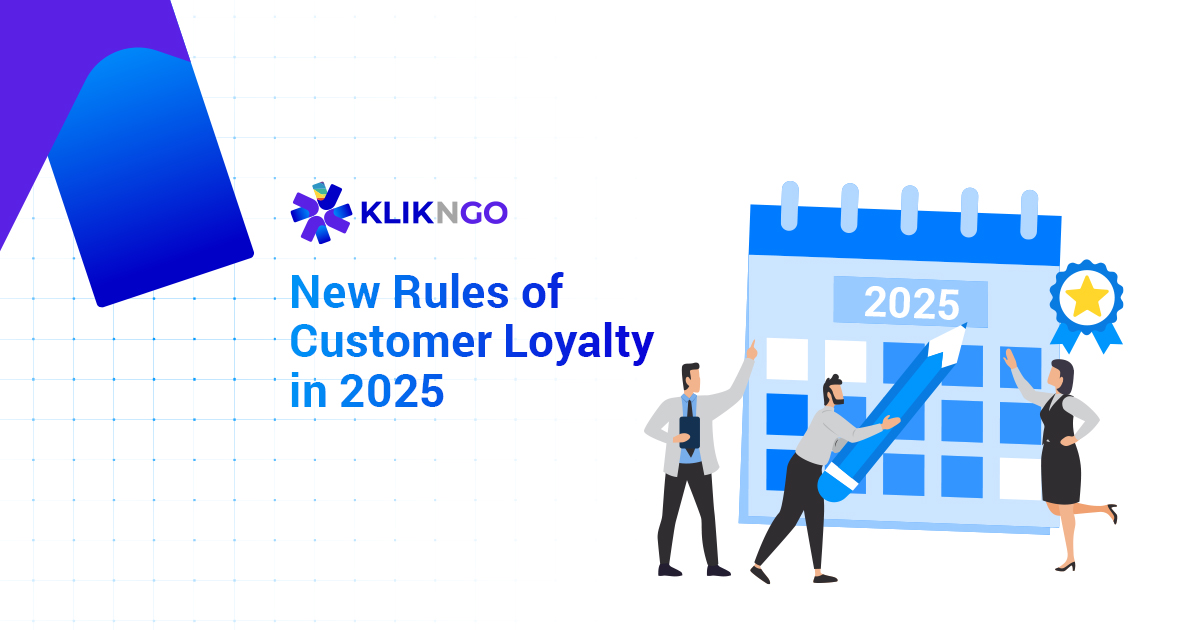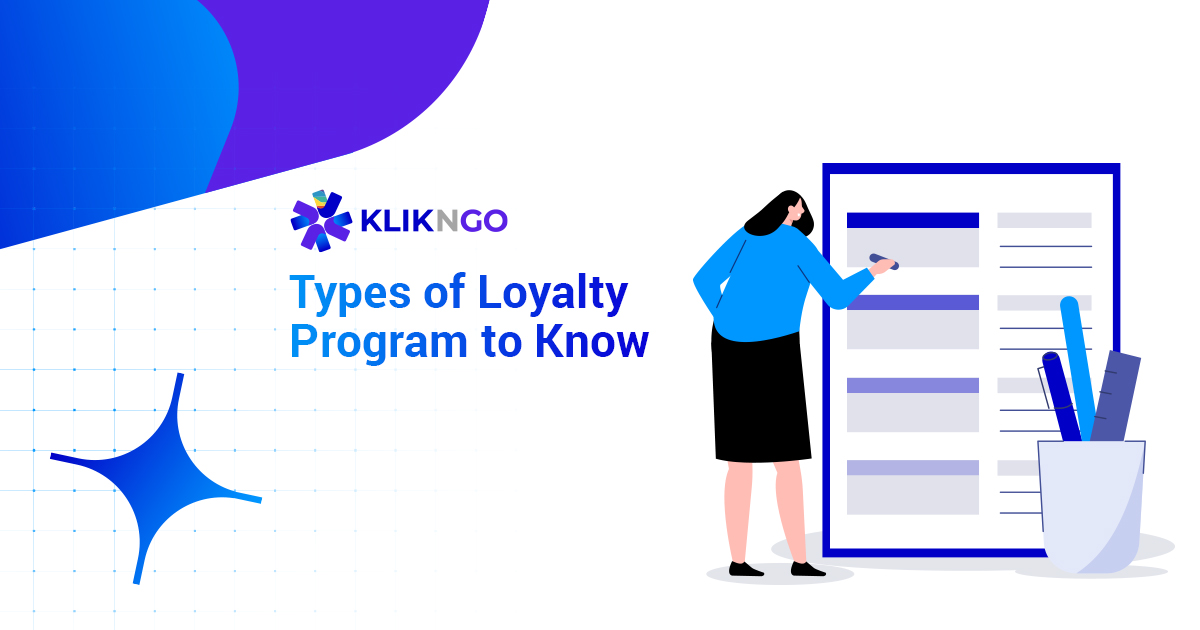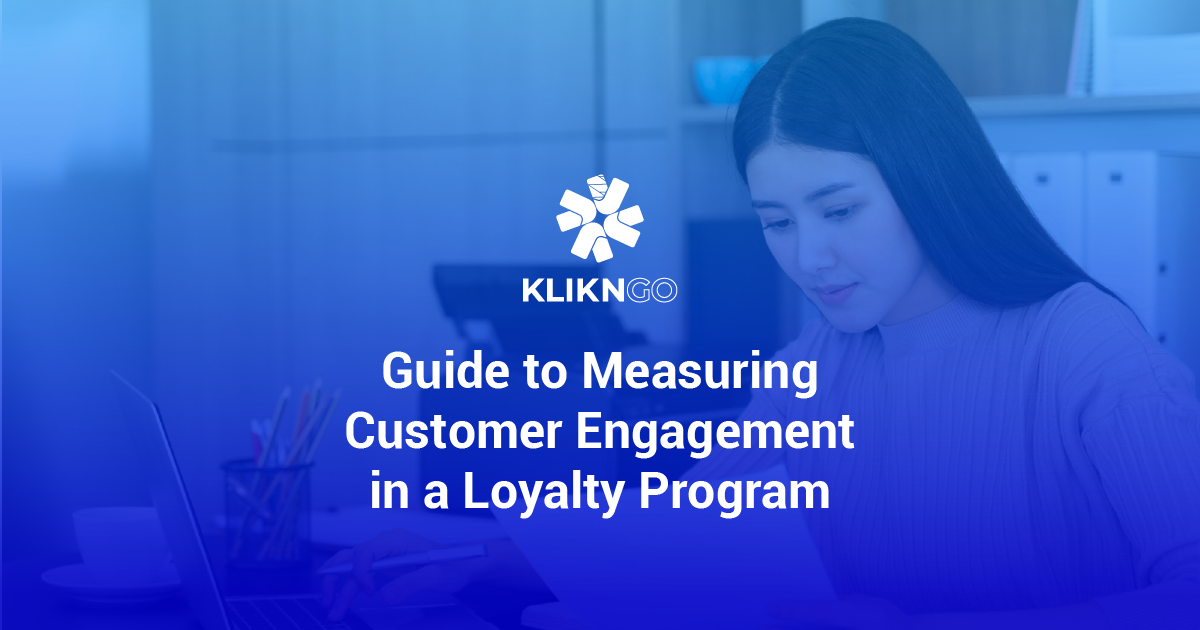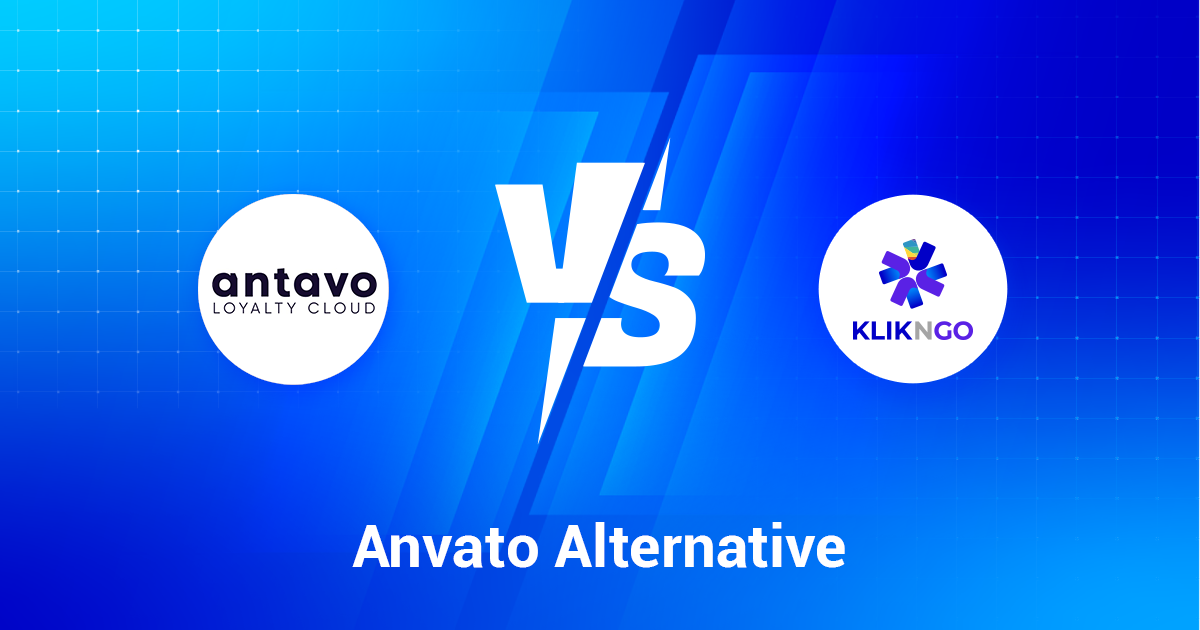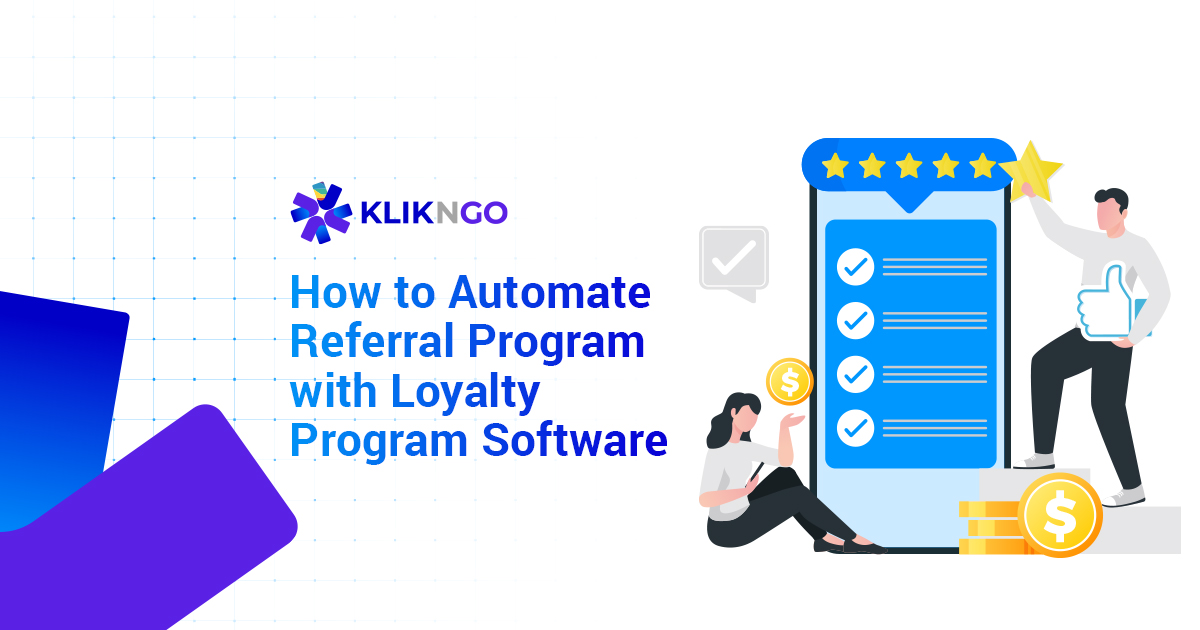In today’s crowded retail market, winning new customers is tough, and keeping them loyal is even tougher. That’s where a well-designed loyalty program comes in. A good loyalty program doesn’t just give discounts; it builds a reason for customers to keep coming back, spend more, and feel connected to your brand.
In 2025, shoppers expect more than just points and punch cards. They want personalized rewards, easy-to-use mobile apps, and perks that match their values, like sustainability or exclusive experiences.
In this article, KlikNGo explores real loyalty program examples from well-known retail brands, plus practical lessons your business can learn from them. Whether you run a small boutique or a nationwide chain, you’ll find ideas to inspire a loyalty program — and choose the best loyalty program system, to truly drive customer retention in 2025 and beyond.
Why Customer Loyalty Still Matters in 2025
Running ads and promotions to attract new shoppers can drain your marketing budget fast. Research shows it costs up to five times more to gain a new customer than to keep an existing one. That’s why more retailers, big and small, are investing in a smart loyalty program as part of their core customer retention strategy.
Today’s consumers expect more than the old-fashioned “buy ten, get one free” punch card. They want flexible rewards, exclusive member perks, and an easy-to-use mobile loyalty app that fits into their daily routine. In fact, a well-run customer loyalty program can boost repeat purchases, increase average spend, and turn casual buyers into loyal brand fans.
At KlikNGo, we’ve seen firsthand how retailers who adopt a reward points system, personalized offers, and VIP member benefits stay ahead of the competition. In a world where new brands pop up daily, a thoughtful loyalty program gives you a powerful edge: loyal customers who choose you again and again.
Key Loyalty Program Trends for 2025
Customer expectations are changing fast, and so are the ways successful brands design their loyalty programs. Here are five key trends shaping how businesses keep shoppers coming back this year:
1️. Personalization at Scale
Generic discounts don’t cut it anymore. Retailers are using customer data to offer personalized rewards, like product suggestions, birthday treats, or bonus points based on shopping habits. A loyalty program that feels custom-made makes customers feel valued.
2️. Mobile-First Experience
Shoppers want to track points, redeem rewards, and get special offers straight from their phone. A smooth mobile loyalty app is now a must-have feature for any modern customer loyalty program.
3️. Gamification & Micro-Rewards
Adding fun challenges, badges, or surprise bonuses keeps members engaged. For example, extra points for trying new products or completing a “spend-and-earn” mission can turn your loyalty program into an experience, not just a discount tool.
4️. Sustainability & Value-Based Rewards
More brands link their loyalty program to causes that matter to customers, like eco-friendly shopping or charity donations. Some retailers offer bonus points when members recycle old products or choose greener options.
5️. Paid or Subscription-Based Memberships
A growing trend is the subscription loyalty model. Instead of just earning points, customers pay a small fee for premium perks, like free shipping, exclusive deals, or special access to services. This creates steady revenue and deeper loyalty.
At KlikNGo, we help retail businesses stay on top of these trends by designing flexible, easy-to-manage loyalty program systems that grow with changing customer needs.
Real Loyalty Program Examples Retail Brands Can Learn From
Talking about trends is one thing, seeing how real brands do it brings the ideas to life. Below are some standout loyalty programs from different retail sectors. Each one shows how thoughtful perks, smart technology, or creative rewards can keep customers coming back for more. Use these examples to spark ideas for your own customer loyalty program in 2025.
1. Starbucks Rewards
Starbucks Rewards is one of the best-known examples of a loyalty program done right. Customers earn Stars for every purchase, which can be redeemed for free drinks, food, or even merchandise. What makes Starbucks stand out is how simple, and addictive, the experience is. Members use the mobile app to order ahead, pay quickly, and track Stars in real time. (source)
The mobile loyalty app also runs fun challenges, like double-Star days or mini-games, which keep customers engaged between visits. This mix of gamification and everyday convenience turns buying coffee into a habit that feels rewarding. It’s no surprise that Starbucks Rewards has millions of active members worldwide.
Retailers don’t need Starbucks’ budget to do this, KlikNGo helps you achieve similar customer engagement at any scale, this example shows how flexible reward points, an easy mobile experience, and engaging promotions can transform an ordinary purchase into repeat visits and stronger customer loyalty.
2️. Sephora Beauty Insider
Sephora’s Beauty Insider is a perfect example of a tiered loyalty program that keeps beauty lovers hooked. Members earn points for every dollar spent, which they can redeem for exclusive product samples, limited-edition items, or even special experiences.
What sets this customer loyalty program apart is its tiered system: Insider, VIB, and Rouge. Each tier unlocks more perks, like birthday gifts, free shipping, early access to new launches, and invitations to private shopping events. This encourages members to spend more to reach higher levels. (source)
Sephora also stands out by letting shoppers choose how to use their points: on products, savings, or unique experiences. With a loyalty program powered by KlikNGo, even small retailers can offer perks and experiences inspired by big brands like this, Sephora’s approach shows how a tiered loyalty program can reward your best customers while motivating everyone to engage more deeply with your brand.
3️. Adidas adiClub
Adidas’ adiClub is a modern loyalty program designed for sports and lifestyle fans. It’s free to join and has four membership levels. Members earn points not just for shopping, but also for things like writing product reviews, tracking workouts, or attending Adidas events (source).
Perks grow with each tier: free shipping, early access to limited sneaker drops, exclusive invitations to sports events, and even access to premium fitness apps. This mix of reward points, community engagement, and special experiences keeps fans loyal to the brand.
Retailers can take inspiration from this example and implement it easily with KlikNGo’s loyalty program system, adiClub shows how adding lifestyle rewards and non-purchase activities into your customer loyalty program can build stronger bonds and encourage repeat visits, both online and in-store.
4️. H&M Membership
H&M’s free loyalty program—simply called H&M Membership—combines classic point-earning with eco-friendly perks. Shoppers earn 1 point for every £1 spent, and points convert into vouchers (e.g., £3 per 100 points) (source). What sets it apart is how H&M rewards sustainable actions: members get extra points for bringing reusable bags, recycling old clothes, and even making climate-smart delivery choices.
Additional benefits include a welcome 10% discount, birthday offers, free shipping over a spend threshold, and early access to limited collections. The program also features tiered escalation—a “Plus” level unlocked at 600 points (approx. £600 spend)—bringing perks like surprise offers and unique member experiences.
If you want to launch a similar loyalty program, KlikNGo makes it simple to set up and customize, H&M’s program is a prime example of a points‑based loyalty program that goes beyond purchases to align with customer values. By incentivizing sustainable behaviors along with shopping, you build deeper engagement and differentiate your brand—without sacrificing simplicity.
5. IKEA Family
IKEA Family is a classic example of a perks-based loyalty program that doesn’t rely on points at all. Instead, it focuses on giving members immediate benefits just for joining, making shoppers feel part of the “IKEA family” from day one (source).
Members get perks like a $5–$10 welcome coupon, free coffee or tea during each store visit, and access to special “family prices” on selected products. IKEA Family also offers free home workshops, extra discounts on services like delivery or assembly, and free damage protection on purchases, called “Oops-assurance”, which covers accidental mishaps when transporting or assembling furniture.
Take this as a proven example, then apply the same tactics through KlikNGo’s ready-made loyalty tools. IKEA Family is proof that a loyalty program doesn’t always need complicated tiers or point tracking. Simple, tangible benefits and a sense of belonging can turn occasional buyers into regular visitors, and build brand loyalty through practical perks.
6️. Petco – Vital Care
Petco’s Vital Care is a standout loyalty program that goes beyond rewards—it blends retail benefits with pet wellness services. This two-tiered membership allows every pet owner to earn perks, while also offering deeper value for those who upgrade. (source)
- Vital Care Core (free tier): Members earn 1 point per $1 spent on products and services, receive a free 10th bag of pet food and eighth grooming visit, and get personalized care reminders via the Petco app.
- Vital Care Premier (paid tier, starting at $19.99/month for dogs and cats): Offers unlimited routine vet exams at Vetco Total Care or custom credits toward outside vets, 20% off grooming or litter, 10% off nutrition, and a monthly $15 reward credit.
By merging points-based rewards with essential pet care services, Petco’s loyalty program taps into real consumer needs—health, habits, and convenience all under one membership. This serves as a great model: tying retail rewards to useful services encourages ongoing engagement and positions your loyalty program as an everyday customer benefit. A strategy like this shows how valuable perks and personalization can be, KlikNGo helps you bring it to life without the complexity.
Lessons Retailers Can Apply Today
Looking at these real-world examples, a few clear lessons stand out for any brand planning to build or upgrade a loyalty program in 2025:
- Keep it simple and rewarding: Whether you use a points-based system, tiered perks, or exclusive access, make sure the benefits are easy to understand and genuinely valuable. Confusing rules are a loyalty killer.
- Use personalization wisely: A modern loyalty program should feel personal. Use customer data to tailor offers, recommend products, or celebrate milestones like birthdays.
- Connect rewards with your brand values: Take a page from H&M or Petco, link your customer loyalty program to causes that matter to your audience, like sustainability or wellness.
- Go mobile-first: A smooth, handy mobile loyalty app makes it easy for members to check points, get updates, and redeem rewards wherever they are.
- Test and adapt: Trends shift fast. Monitor how customers use your program and tweak it to stay fresh and exciting.
KlikNGo helps businesses design loyalty strategies that tick all these boxes, making your loyalty program not just an add-on, but a true growth driver.
Common Pitfalls to Avoid
Even a great loyalty program can fall flat if certain mistakes creep in. Here are a few pitfalls retailers should watch out for:
- Too complicated: If members can’t easily understand how to earn or use rewards, they won’t bother. Keep your reward points system clear and simple.
- Neglecting mobile users: Many shoppers check rewards on their phones. A clunky app (or none at all) hurts engagement.
- One-size-fits-all rewards: Generic discounts feel boring. A strong loyalty program should offer variety and personalization.
- Set and forget: Trends change. Failing to update your program or listen to member feedback can make it feel stale.
- Weak communication: If customers don’t know what perks they have, they won’t use them. Remind members with timely updates and promotions.
KlikNGo helps retailers sidestep these pitfalls by building loyalty solutions that are simple, flexible, and easy for customers to love.
Conclusion
In today’s fast-changing retail landscape, a loyalty program is no longer just an optional extra, it’s a critical tool for building trust, increasing repeat purchases, and turning everyday shoppers into devoted brand advocates.
From global giants like Starbucks and Sephora to brands like IKEA and Petco, the best loyalty programs prove one thing: customers want more than just discounts. They crave convenience, personalized experiences, and rewards that feel relevant to their lifestyle and values. A modern customer loyalty program, backed by the right loyalty program system, does exactly that, and keeps your brand top of mind, even in a market full of choices.
But designing an effective loyalty strategy takes more than copying someone else’s model. It requires understanding your customers, setting clear goals, choosing the right reward structure, and delivering it all through a seamless, mobile-first experience. That’s where KlikNGo comes in.
We help retail businesses, big and small, create loyalty programs that work in the real world. With KlikNGo, you get the tools, tech, and expert guidance to launch a loyalty program system that’s simple to manage, easy for customers to love, and flexible enough to evolve as trends change.
Ready to keep your best customers coming back, and spending more, all year round? Let’s build a loyalty program your brand can be proud of.
👉 Get started with KlikNGo today and turn loyal shoppers into your biggest competitive advantage.

